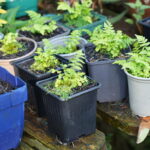Living in a tiny one bed urban flat here in London, it proves quite a challenge for growing tender exotics. Advice is always to store these away in heated greenhouses, conservatories, a garage, shed or spare room inside, so what do you do when you have none of these things? So many people of my generation simply have no space for this. Over the last five years I’ve managed it through some experiments and mishaps. This is what I’ve learnt:
1) Save a space for giant houseplants
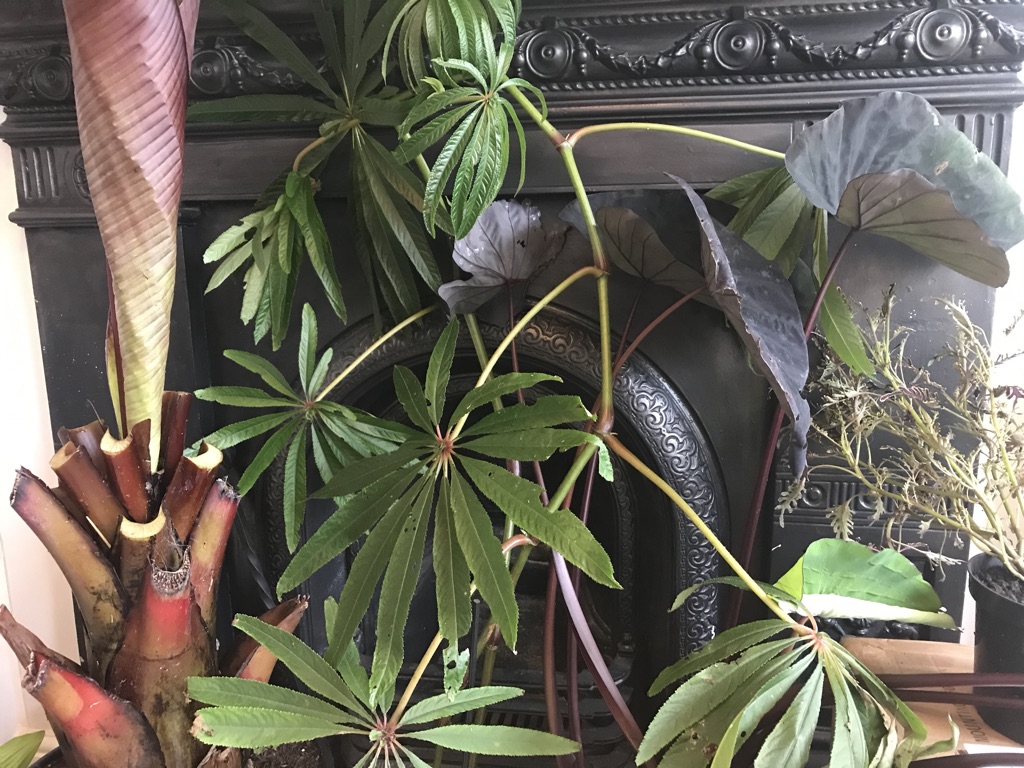
Firstly, I allow space somewhere in the house to squeeze my most treasured tropicals. Ideally in the coolest spot – they need to be above freezing but ideally not cooked by the heating. OK, so the above plants look a total mess as I’ve just dragged them inside kicking and screaming. But they’re the lucky ones, these receive the five star treatment, given more space and light than even some houseplants. To help with space, I reduce the foliage down in some cases and you can see I’ve chopped off all but the top leaf of the Ensete on the left. As they adjust to the new setting, they will start to perk up and look better for a time.
Unfortunately, most tender tropical plants do not like the drying nature of central heating. By the end of winter they can look near dead but do not fear, I find that as soon as they go outside in the spring when night temperatures are above 10C, they’ll grow happily again.
Colocasia is a good example, where it benefits from being forced to go almost dormant by reducing the amount of water it receives. Some colocasia are in fact kept completely dry but ‘Black Magic’ (above) I find needs to have drier compost, but must never dry out. It will go dormant by spring but comes back.
2) Cuttings
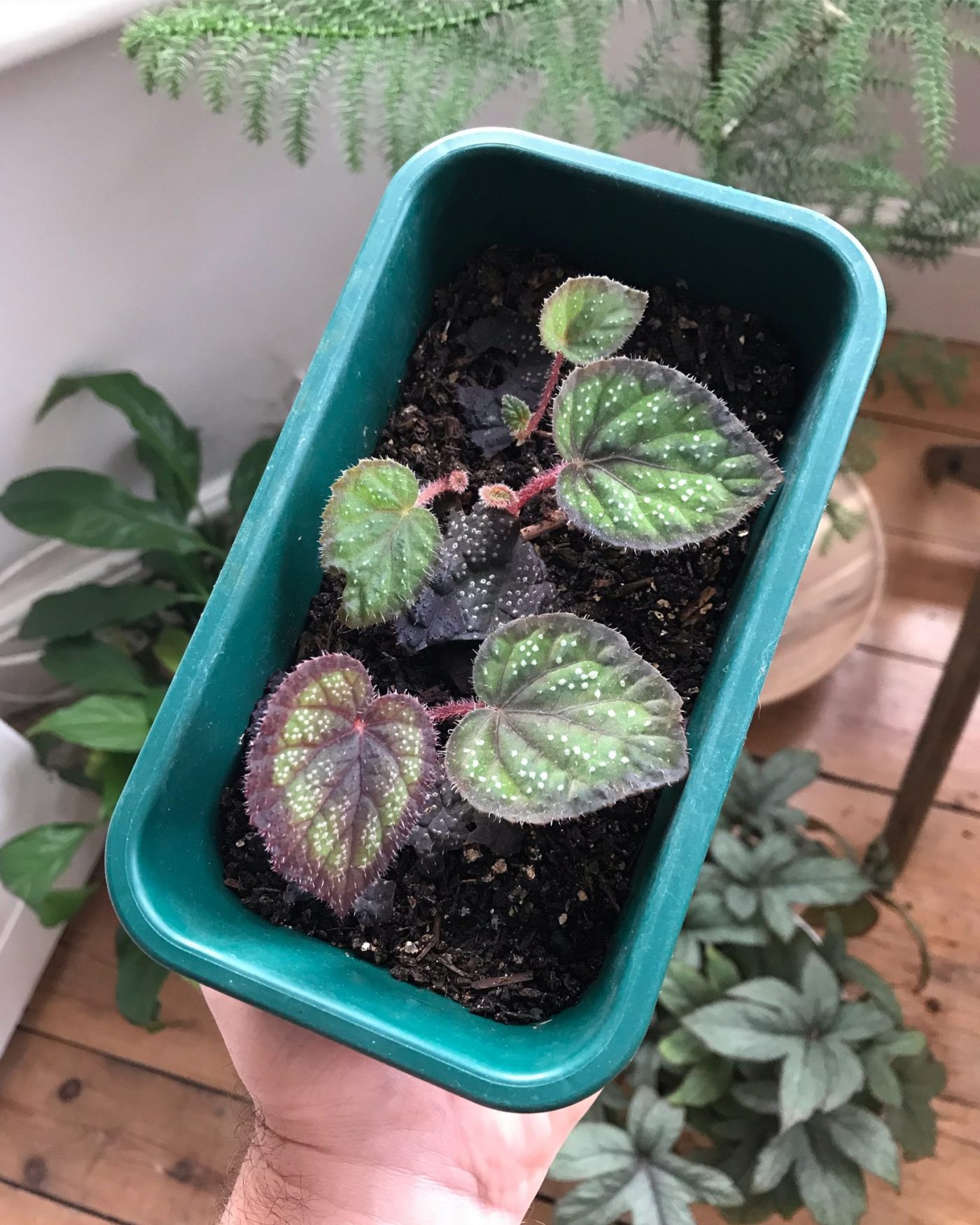
Begonias and Solenostemon really do hate central heating. I’ve tried to bring them in and keep them as houseplants over winter but no chance. Some survive… just. Instead the best method I’ve found is to take leaf cuttings for Begonias and stem cuttings for Solenostemon. Key is to then keep them covered and humid in little seed trays as above, protecting them from the central heating. Come spring, pot them up and off they go!
3) Collect seed
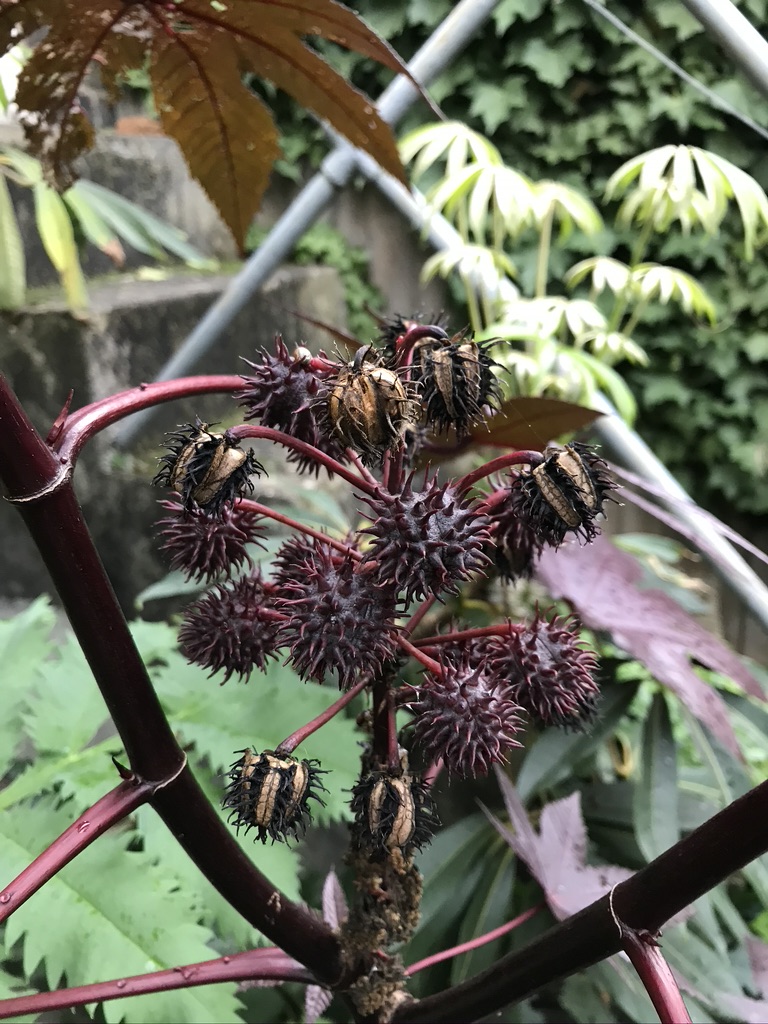
My favourite method of keeping tender tropicals going because it is the easiest and very rewarding: collect seeds. Ricinus communis (above) is actually an incredible weed around the world – and the same is true in southern and sheltered urban spots here – in the UK most people haven’t realised yet because they remove the plant before it has a chance to self sow. Down South, if left out the plant may die (although often it can survive winter in sheltered spots) but it can self seed prolifically. I make use of this by collecting the seed pods when they turn brown and dry in an envelope or paper bag. Use gloves because the seeds are very poisonous.
I could let it self sow but because our garden is so tiny, everything has a spot. By collecting the seed I can specify where the plants go in spring. I allow many other plants to self sow however, these are the ones that don’t mind a bit more root disturbance if I move them.
4) Shelter in cosy spots outside
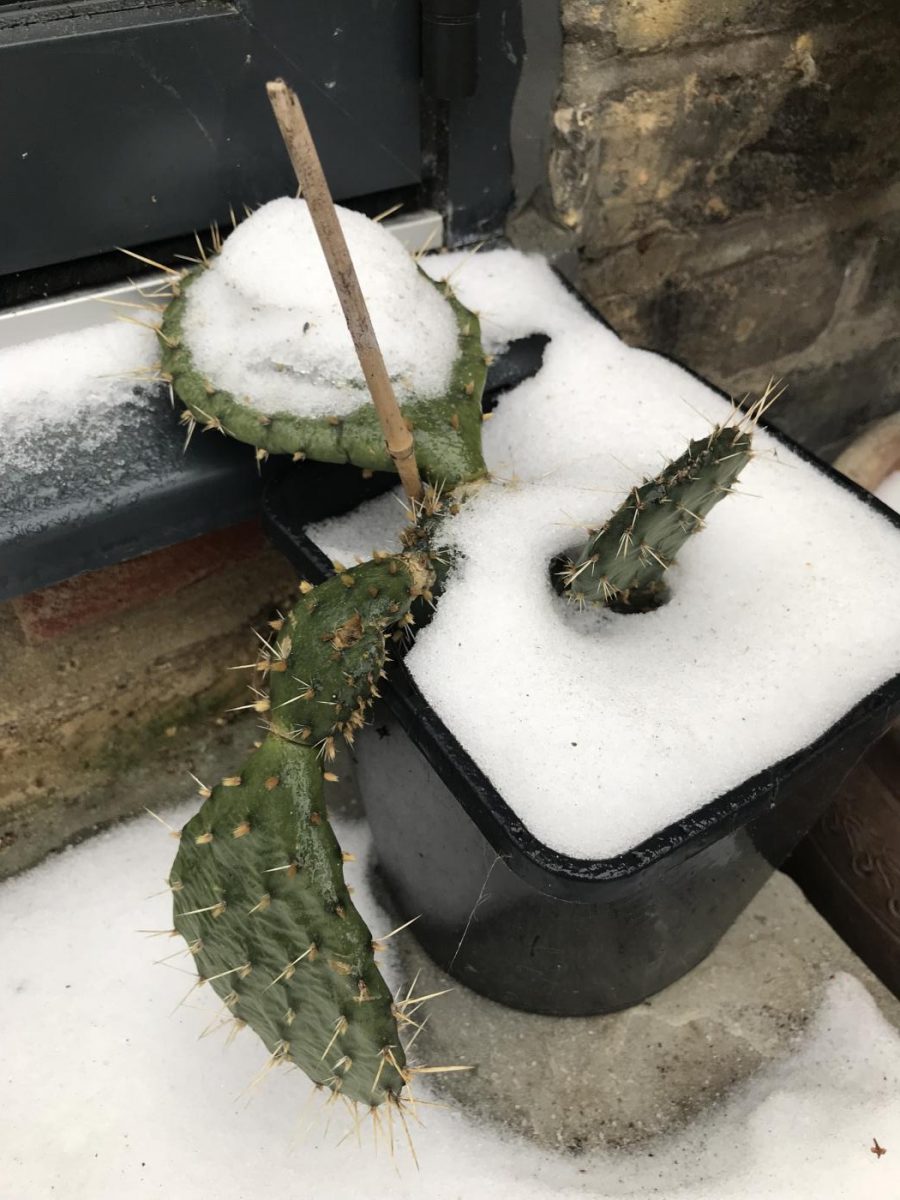
Alright, the above photo is misleading because that’s a hardy Opuntia. We’re lucky being in a small urban garden as the shelter of the warm houses creates a microclimate that rarely has frost. However, those tender plants on the cusp of dying at 0C still need protection. A number I will move closer to the house and tucked away in corners from chilling winds and too much rain. This technique is so simple but amazingly effective. I have about 20 plants that are considered house or conservatory plants I leave outside all winter in this way. Aeoniums are an example.
5) Look for hardier tropicals
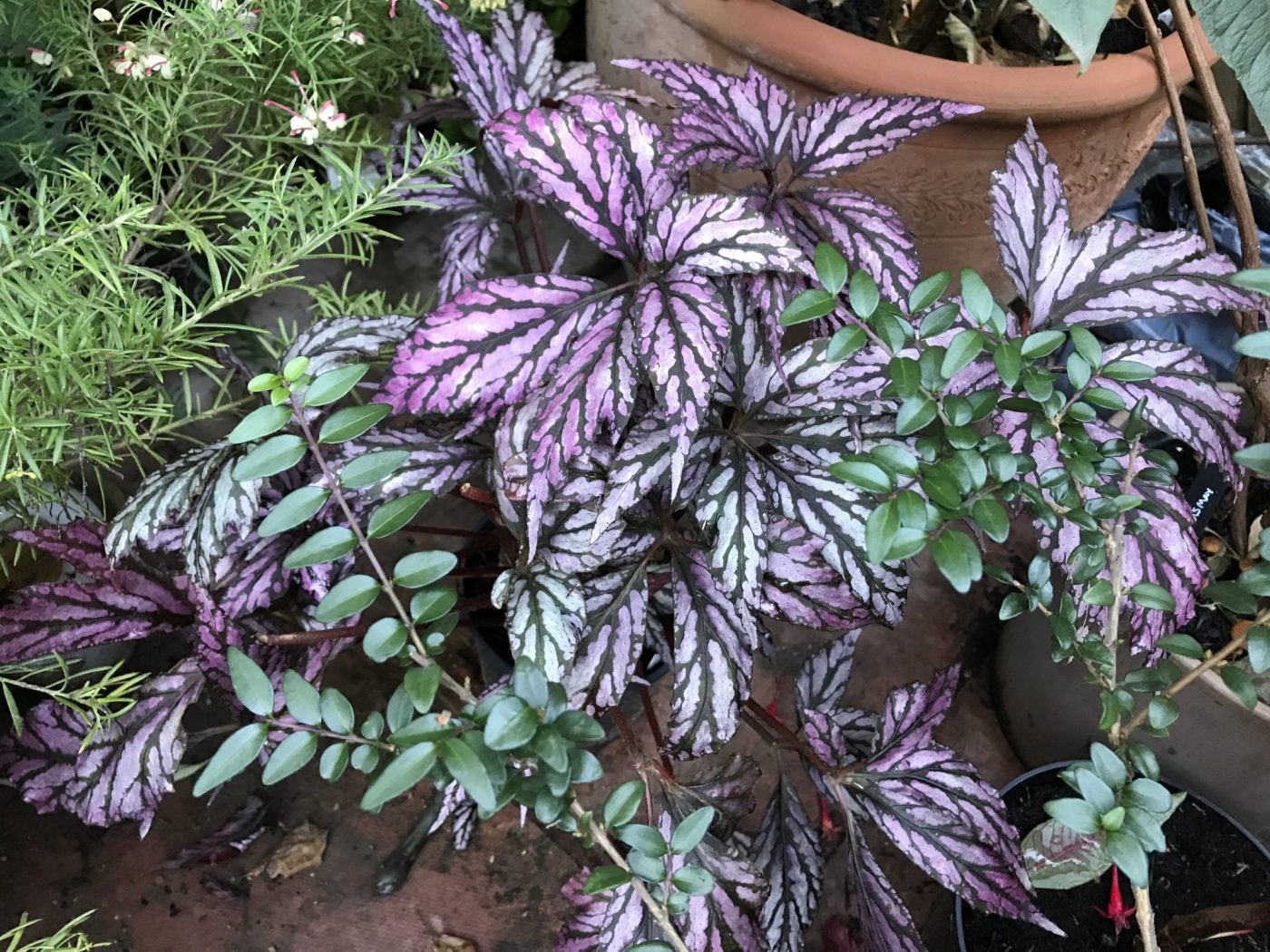
I hate myself for writing this because I hate this copout answer myself when I read it – you came here looking for tips and tricks to keep real tender tropicals through winter, not another recommendation for Fatsia japonica and bamboo. However, it is worth mentioning, I feel, because there are so many more ‘tropical look’ plants available today. They’re still often borderline hardy but with our warming climate and urban gardens, they may as well be in South or East Africa where many originated. It’s always worth trying the conservatory or just tender plants in warm pockets of your own garden, often they’re tougher than is thought.
6) Covers and emergency measures
I tend not to cover plants up in the garden, it just doesn’t look good and is a faff. That said, young banana stems benefit from a hessian wrap otherwise they can turn to mush. The plant survives and sends up new shoots in spring but you’re starting from scratch. Where as a simple jacket keeps the height of the previous years’ growth. If there is a particularly cold night, I will either bring plants in for one night or cover them with fleece – but not for all of winter.
